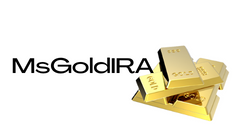Bitcoin, the pioneer and most renowned cryptocurrency, has been grabbing attention lately due to its recent surge to an all-time high surpassing $72,000. This significant spike in price has reignited interest in Bitcoin as an investment opportunity, prompting individuals to contemplate its implications on their financial future.
Market Dynamics and Risk Evaluation
Bitcoin's growth over the years can be attributed to various factors such as increasing institutional adoption, rising investor interest, and greater acknowledgment by traditional financial institutions. Despite these positive indicators, Bitcoin remains a highly volatile asset influenced by factors like supply and demand, government regulations, and media coverage. This volatility is not unique to Bitcoin but also prevalent in traditional investment options.
Strategies for Integrating Bitcoin into Wealth Management
Despite the unpredictability associated with Bitcoin, many investors find it appealing as a hedge against inflation. Unlike traditional currencies susceptible to inflation due to unlimited printing, Bitcoin's finite supply shields it from devaluation, making it an attractive option for wealth preservation.
Diversify Your Portfolio: To manage risk and potentially benefit from Bitcoin's high returns, consider diversifying your investment portfolio by including Bitcoin and other cryptocurrencies. Stablecoins linked to stable assets like the US dollar can help cushion the impact of Bitcoin's volatility.
Take Calculated Risks: To achieve sustained growth, investors must be willing to take calculated risks by diversifying their asset classes and incorporating Bitcoin into their investment strategy. It's crucial to stay vigilant against fraudulent activities targeting cryptocurrency investors.
Educate Yourself: Understanding Bitcoin's technology, market trends, and its role in the financial landscape is essential before making investment decisions. Compare Bitcoin's characteristics with gold, stocks, and other conventional investments to make informed choices.
Regulate Your Emotions: Avoid letting emotions drive your investment decisions. Stick to a well-thought-out plan and refrain from making impulsive choices based on market fluctuations or fear of missing out.
Utilize Dollar-Cost Averaging: Investing fixed amounts at regular intervals can help mitigate market volatility and reduce risks associated with market fluctuations, making it a practical strategy for incorporating Bitcoin into your investment portfolio.
Implement Tax-Loss Harvesting: Consider selling investments at a loss to offset capital gains and lower taxes. This strategy can be beneficial for managing Bitcoin's volatility within your investment portfolio.
Stick to a Long-Term Strategy: Avoid short-term decision-making based on price fluctuations and focus on a long-term investment plan for Bitcoin. This approach can help you navigate market uncertainties more effectively.
Future Outlook for Bitcoin
Industry experts anticipate further growth for Bitcoin following its surge to $72,000, with some projecting a price surpassing $1 million by 2030. While exact predictions remain challenging, Bitcoin has cemented its position as a valuable investment asset with potential for significant growth.
Bitcoin's recent price surge underscores its legitimacy as an investment choice. With increasing institutional adoption and ongoing investor interest, Bitcoin is poised for continued growth in the future. By understanding the risks and adopting a strategic approach to integrating Bitcoin into your investment strategy, you can position yourself to benefit from its potential.
Thorough research, thoughtful consideration, and a long-term perspective are essential for making informed investment decisions and maximizing returns. Keep abreast of Bitcoin's developments and consider its inclusion in your investment plan for long-term financial stability and growth.
Frequently Asked Questions
How to Open a Precious Metal IRA
An IRA to hold precious metals can be opened by opening a Roth Individual Retirement Account (IRA) that is self-directed.
This account is more advantageous than other types of IRAs, because you don’t have to pay taxes on any interest earned from your investments until they are withdrawn.
This makes it appealing to those who want to both save money and get a tax cut.
You are not restricted to investing only in gold or silver. If it meets the IRS guidelines, you can invest in any asset that interests you.
People often think of silver and gold when they hear “precious metal” but there are many other precious metals.
Examples include platinum, palladium and rhodium.
There are many ways that you can invest precious metals. Two of the most popular ways to invest in precious metals are buying bullion coin and bar coins, and also purchasing shares in mining corporations.
Bullion Coins and Bars
One of the most straightforward ways to invest is to buy bullion coin and bars. Bullion is a general term that refers to physical ounces of gold and silver.
When you buy bullion coins and bars, you receive actual pieces of the metal itself.
While you may not immediately see any change after buying bullion coins and bars in a store, there will be some long-term benefits.
You'll be able to see a piece tangible of history. Each coin and each bar have a story.
It is often worth less than its nominal price if you examine the face value. For example, in 1986 the American Eagle Silver Coin sold for $1.00 an ounce. The price of an American Eagle is now closer to $40.00 a ounce.
Bullion has seen a dramatic rise in value since its introduction. Many investors would rather buy bullion coins or bullion bars than futures contracts.
Mining Companies
A great way to get precious metals is by investing in shares in mining companies. When you invest in mining businesses, you are investing in their ability to produce silver and gold.
You will get dividends based off the company's profits in return. These dividends will be used to pay shareholders.
Additionally, you will be able to take advantage of the company's potential growth. The demand for the product will also cause an increase in share prices.
You should diversify because these stocks have a tendency to fluctuate in their prices. This involves spreading your risk over multiple companies.
It is important to keep in mind that mining companies can lose their financial investments just as stock markets investors.
If gold prices drop dramatically, your ownership share could be worthless.
The Bottom Line
Precious metals such silver and gold provide an economic refuge from uncertainty.
Gold and silver can fluctuate in price. If you're interested in making a long-term investment in precious metals, consider opening up a precious metals IRA account with a reputable firm.
You will be able to take advantage of tax incentives while also benefiting from physical assets.
How much should your IRA include precious metals
You can protect yourself against inflation by investing your money in precious metals, such as silver and gold. This is not only an investment for retirement, but it can also help you prepare for any economic downturn.
While silver and gold have seen significant increases in the last few years, they are still safe investments since they don’t fluctuate as often as stocks. These materials are in constant demand.
Predictable and stable prices for gold and silver are common. They tend to rise during economic growth and drop during recessions. This makes them great money-savers and long-term investments.
10% of your total portfolio should be invested in precious metals. You can increase this percentage if you want further diversification.
Which is stronger, 14k or sterling gold?
Although gold and silver can be strong metals, sterling silver is far less expensive as it contains 92% silver instead of 24%.
Sterling silver is also known by the name “fine silver” because it is made up of a mixture from silver and metals like zinc, copper, and zinc.
Gold is generally considered to be very strong. It takes a lot of pressure to break it down. If you dropped an object onto a piece or gold, it would break into thousands instead of two halves.
However, silver doesn't have the same strength as gold. A sheet of silver would likely bend and fold if you dropped an item on it.
Silver is often used to make jewelry and coins. The price of silver can fluctuate according to supply and demande.
How do you withdraw from an IRA that holds precious metals?
If your account is with a precious metal IRA firm such as Goldco International Inc., you may want to consider withdrawing funds. You can sell your metals at a higher price if they are still in the account than if you left them there.
Here's how to withdraw your precious metal IRA money.
First, check to see if your precious metal IRA provider permits withdrawals. Some companies offer this option while others do not.
Second, you should determine if your metals are tax-deferred. Many IRA providers provide this benefit. Some providers do not offer this benefit.
Third, make sure to check with your precious metal IRA provider if there are any fees associated with these steps. The withdrawal may cost extra.
Fourth, you should keep track of precious metal IRA investments for at minimum three years after they are sold. You should therefore wait until January each year to calculate capital losses on your investment portfolio. You will then need to file Form 8949 which contains instructions on how to calculate the amount of gain that you have realized.
In addition to filing Form 8949, you must also report the sale of your precious metals to the IRS. This step ensures that you pay taxes on all profits earned from your sales.
A trusted attorney or accountant should be consulted before you sell your precious metals. They will ensure you are following all the procedures and avoid making costly mistakes.
How much are gold IRA fees?
The average annual fee for an individual retirement account (IRA) is $1,000. However, there are many different types of IRAs, such as traditional, Roth, SEP-IRAs, and SIMPLE IRAs. Each type of IRA has its own rules and requirements. If the earnings are not tax-deferred you could be subject to taxes. Consider how long you will keep the money. If you have a long-term goal of holding on to your money, you'll be able to save more money if you open a Traditional IRA.
Traditional IRAs allow you to contribute up $5,500 annually ($6,500 if 50+). A Roth IRA allows you to contribute unlimited amounts every year. The difference is simple. With a traditional IRA you can withdraw the money when you retire and pay no taxes. However, Roth IRA withdrawals are subject to tax.
What type of IRA is best?
The most important thing when choosing an IRA for you is to find one that fits within your goals and lifestyle. Consider whether you are looking to maximize tax-deferred growth, minimize taxes and pay penalties later, avoid taxes, or both.
The Roth option is a good choice if you have a lot of money saved for retirement, but not enough to invest. If you plan to continue working beyond age 59 1/2, and pay income taxes on any account withdrawals, the Roth option may be a good choice.
The traditional IRA is better if you want to retire earlier because you will likely owe tax on your earnings. But if you're going to work well past age 65, the Roth IRA might make more sense since it allows you to withdraw some or all of your earnings without paying taxes.
Statistics
- Depending on your financial situation, most experts recommend you invest no more than 5% to 10% of your retirement funds in precious metals. (forbes.com)
- You can only purchase gold bars of at least 99.5% purity. (forbes.com)
- Silver must be 99.9% pure • (forbes.com)
- The IRS also allows American Eagle coins, even though they do not meet gold's 99.5% purity standard. (forbes.com)
External Links
investopedia.com
en.wikipedia.org
forbes.com
- Gold IRA – Add Sparkle to Your Retirement Nest Egg
- Understanding China's Evergrande Crisis – Forbes Advisor
regalassets.com
How To
How to Decide if a Gold IRA ‘Is Right For You'
Individual Retirement Account (IRA) is the most popular type. Individual Retirement Accounts (IRAs) are available through financial planners, banks, mutual funds and employers. The IRS allows individuals to contribute up to $5,000 annually without tax consequences. This amount is available to all IRAs, regardless of age. You can only put a certain amount into an IRA, but there are restrictions. For example, if your age is less than 591/2 years old, you can't contribute to a Roth IRA. Contributions must be made by those under 50 years old. In addition, some people who work for their employer may be eligible for matching contributions from their employer.
There are two types: Roth and Traditional IRAs. Traditional IRAs allow you to invest in stocks, bonds and other investments. A Roth IRA allows you to only invest in after-tax dollars. Roth IRA contributions aren't subject to tax on the amount they are received, but Roth IRA withdrawals will be. Some people may choose to use both. Each type is different. There are pros and con's to each. How do you choose the best type of IRA for you? Three things to bear in mind before you decide which type of IRA is best for you:
Traditional IRA pros:
- Contribution options vary by company
- Employer match possible
- Save more than $5,000 per Person
- Tax-deferred growth up to withdrawal
- There may be restrictions based upon income level
- Maximum contribution limit: $5,500 per annum (or $6,500 for married filing jointly).
- Minimum investment: $1,000
- After age 70 1/2 you are required to begin mandatory distributions
- An IRA can only be opened by someone who is at least five years older than you.
- Cannot transfer assets from IRAs
Roth IRA pros
- Contributions are free of taxes
- Earnings grow tax-free
- Minimum distribution not required
- Investment options are limited to stocks, bonds, and mutual funds
- There is no maximum amount limit
- There are no restrictions on the transfer of assets between IRAs
- Open an IRA if you are 55 years or older
You should be aware that not every company offers the same IRAs. For instance, some companies offer a choice between a traditional or a Roth IRA. Others allow you to combine them. It is also important to note that different types IRAs will have different requirements. Roth IRAs have no minimum investment requirements, while traditional IRAs require a minimum $1,000 investment.
The Bottom Line
It is important to decide whether you want taxes now or later when you choose an IRA. If you plan to retire in the next ten years, a traditional IRA might be the best choice. Otherwise, a Roth IRA may be better suited for you. In either case, it's a smart idea to speak with a professional about your retirement plans. Someone who understands the market will be able to recommend the best options.
—————————————————————————————————————————————————————————————-
By: Miles Oliver
Title: Bitcoin's Price Surge: A Look at What It Means for Your Investment Strategy
Sourced From: bitcoinmagazine.com/markets/bitcoins-surge-to-all-time-high-what-it-means-for-your-investment-future
Published Date: Thu, 21 Mar 2024 16:00:00 GMT










